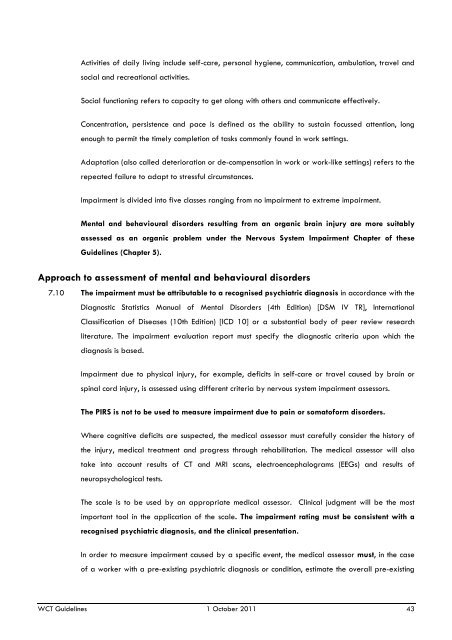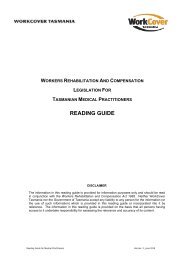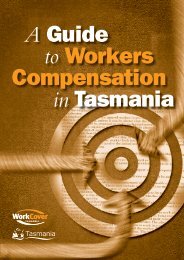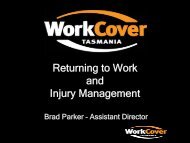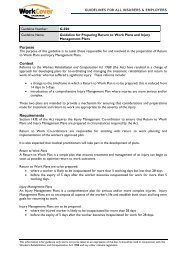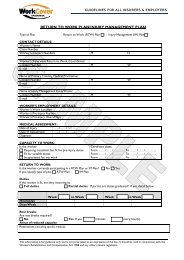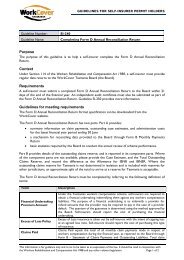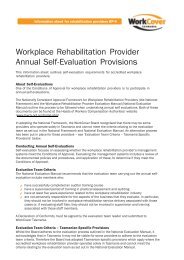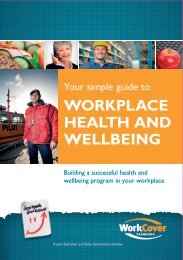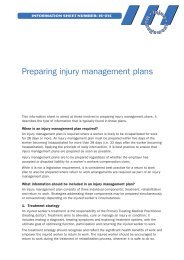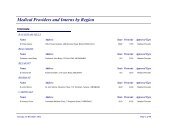Guidelines for the assessment of permanent impairment Version 3
Guidelines for the assessment of permanent impairment Version 3
Guidelines for the assessment of permanent impairment Version 3
You also want an ePaper? Increase the reach of your titles
YUMPU automatically turns print PDFs into web optimized ePapers that Google loves.
Activities <strong>of</strong> daily living include self-care, personal hygiene, communication, ambulation, travel andsocial and recreational activities.Social functioning refers to capacity to get along with o<strong>the</strong>rs and communicate effectively.Concentration, persistence and pace is defined as <strong>the</strong> ability to sustain focussed attention, longenough to permit <strong>the</strong> timely completion <strong>of</strong> tasks commonly found in work settings.Adaptation (also called deterioration or de-compensation in work or work-like settings) refers to <strong>the</strong>repeated failure to adapt to stressful circumstances.Impairment is divided into five classes ranging from no <strong>impairment</strong> to extreme <strong>impairment</strong>.Mental and behavioural disorders resulting from an organic brain injury are more suitablyassessed as an organic problem under <strong>the</strong> Nervous System Impairment Chapter <strong>of</strong> <strong>the</strong>se<strong>Guidelines</strong> (Chapter 5).Approach to <strong>assessment</strong> <strong>of</strong> mental and behavioural disorders7.10 The <strong>impairment</strong> must be attributable to a recognised psychiatric diagnosis in accordance with <strong>the</strong>Diagnostic Statistics Manual <strong>of</strong> Mental Disorders (4th Edition) [DSM IV TR], InternationalClassification <strong>of</strong> Diseases (10th Edition) [ICD 10] or a substantial body <strong>of</strong> peer review researchliterature. The <strong>impairment</strong> evaluation report must specify <strong>the</strong> diagnostic criteria upon which <strong>the</strong>diagnosis is based.Impairment due to physical injury, <strong>for</strong> example, deficits in self-care or travel caused by brain orspinal cord injury, is assessed using different criteria by nervous system <strong>impairment</strong> assessors.The PIRS is not to be used to measure <strong>impairment</strong> due to pain or somato<strong>for</strong>m disorders.Where cognitive deficits are suspected, <strong>the</strong> medical assessor must carefully consider <strong>the</strong> history <strong>of</strong><strong>the</strong> injury, medical treatment and progress through rehabilitation. The medical assessor will alsotake into account results <strong>of</strong> CT and MRI scans, electroencephalograms (EEGs) and results <strong>of</strong>neuropsychological tests.The scale is to be used by an appropriate medical assessor. Clinical judgment will be <strong>the</strong> mostimportant tool in <strong>the</strong> application <strong>of</strong> <strong>the</strong> scale. The <strong>impairment</strong> rating must be consistent with arecognised psychiatric diagnosis, and <strong>the</strong> clinical presentation.In order to measure <strong>impairment</strong> caused by a specific event, <strong>the</strong> medical assessor must, in <strong>the</strong> case<strong>of</strong> a worker with a pre-existing psychiatric diagnosis or condition, estimate <strong>the</strong> overall pre-existingWCT <strong>Guidelines</strong> 1 October 2011 43


